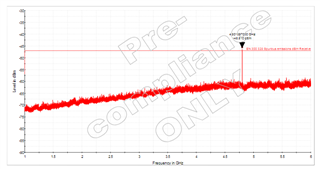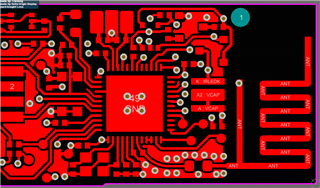We are currently going through certification and have had an interesting failure during radiated emissions. When in normal transceiver mode, all is well, but when we put the device into a special receiver only mode using the Wirepas tool then we fail at the second harmonic of 4.8GHz even though there are no emissions at 2.4GHz. Very odd.
I would have thought that, if anything, we would fail a transmitter test rather than a receiver test. Could the emissions be coming from the receiver local oscillator? What would you suggest to try and fix it?
Incidentally, we are using a pretty standard meandering inverted F PCB trace antenna with parallel cap and series inductor.




